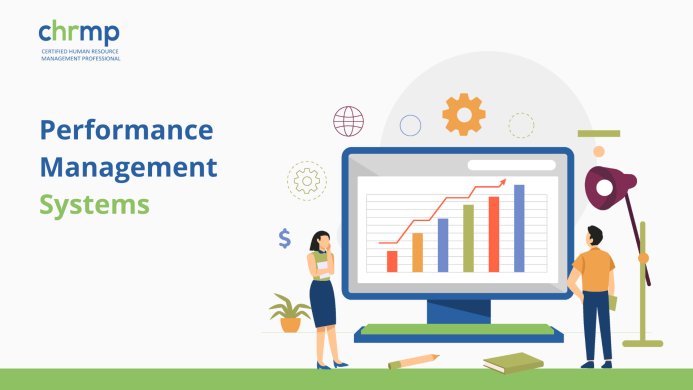

Performance management systems have emerged as one of the key aspects that drive organisational success in today’s fast-paced and ever-changing industrial landscape.
And having a high-performing workforce is a great way to improve overall business performance and gain a competitive edge over their competitors.
But with constant evolution in the world of work, traditional performance management strategies have fallen short. In addition, it’s tremendously challenging to manage employee performance with the rise of remote work and distributed teams.
Thus, it’s essential for modern-day companies to have the latest performance management systems in place.
In this blog, we shall explore performance management systems, the ways technology is transforming how we manage employee performance and the latest trends.
We shall also explore the key components of performance management, which are goal setting, performance evaluation, feedback, and coaching.
Whether you’re a business owner, manager, or HR professional, this blog will provide valuable insights into performance management and how it is used to drive the organisation to greater heights of success.
So without further ado, let’s get started.
A performance management system is a specific set of tools, processes and practices that managers use to measure, monitor and improve the performance of the company’s workforce.
Performance management is an ongoing process that involves setting achievable goals and expectations from employees, providing feedback and guidance, evaluating and monitoring performance, and taking corrective action whenever required.
A performance management system is used to ensure that employees’ objectives are lined according to organisational goals and objectives by helping them perform their tasks to the best of their abilities.
They also help managers identify weaknesses of employees and help them overcome those weaknesses with the help of additional training and support and other necessary resources to improve their skills, productivity and performance.
A well-designed performance management system can have a significant impact on an organisation’s success, as it increases employee engagement, motivation, and productivity. It leads to improved communication, collaboration and trust between employees and managers, which translates itself into a more positive and supportive work culture.
A performance management system is an essential tool for organisations that want to achieve their strategic goals and objectives while ensuring that their employees are performing at their best level.
Performance management is important for several reasons.
To summarise, the performance management system is important because it helps to align employee performance with organisational goals, at the same time, provides a framework for setting clear expectations and goals both for employees and managers, provides feedback to employees on their performance, helps to identify and address performance issues, and creates a positive and supportive workplace culture.
A performance management system consists of certain key elements that work together to monitor, measure, and enhance employee performance.
These elements could be summarised as follows:
1. Goal setting: Establishing clear, measurable, and attainable goals and objectives for both employees and managers that align with the organisation’s overall strategy and vision.
2. Performance planning: Development of a plan that outlines specific actions, strategies, and resources needed to achieve the established goals and objectives of the organisation.
3. Performance monitoring: Continuous tracking and monitoring of employee performance against the established goals and objectives, using various tools and techniques such as regular check-ins, progress reports, and performance metrics by employers.
4. Performance feedback: Providing regular feedback and coaching to employees to help them understand how well they performed or to identify areas for improvement.
5. Performance evaluation: Conduct formal evaluations of employee performance on a regular basis, typically annually or bi-annually, to assess progress, identify strengths and weaknesses, and establish goals for the upcoming period.
6. Development and training: Providing employees with the necessary resources and support to improve their skills and abilities and to meet the established goals and objectives.
7. Performance recognition and rewards: Recognising and rewarding employees for their achievements and contributions to the organisation using a variety of methods such as bonuses, promotions, and non-monetary incentives.
Overall, a well-designed performance management system should be comprehensive, flexible, and adaptable to the specific needs and goals of the organisation and its employees. By effectively managing performance, organisations can improve productivity, enhance employee engagement and motivation, and achieve their overall objectives.
Implementing an effective performance management system is crucial for organizations to drive employee engagement, productivity, and overall performance.
Here are five best practices to consider when designing and implementing a performance management system:
1.Clear and Aligned Goals
Start by setting clear, specific, and measurable performance goals that align with the organization’s objectives. Ensure that employees understand how their individual goals contribute to the overall success of the organization. Regularly review and update these goals to reflect changing business priorities.
2. Ongoing Feedback and Communication
Encourage a culture of continuous feedback and open communication between managers and employees. Provide timely and constructive feedback to employees, focusing on both strengths and areas for improvement. Regular check-ins and performance discussions throughout the year help keep employees engaged and motivated.
3. Regular Performance Reviews
Conduct formal performance reviews at regular intervals (e.g., annually or semi-annually) to evaluate employee performance against the established goals and expectations. These reviews should be based on objective criteria, considering both quantitative and qualitative measures. Use this opportunity to recognize achievements, discuss development opportunities, and align career aspirations.
4. Employee Development and Growth
Integrate employee development and growth opportunities within the performance management system. Offer training programs, coaching, mentoring, and career development plans to support employees in enhancing their skills and achieving their professional goals. This not only helps improve performance but also increases employee satisfaction and retention.
5. Performance Recognition and Rewards
Recognize and reward high-performing employees to reinforce positive behaviors and motivate others. Implement a fair and transparent reward system that aligns with performance outcomes and the organization’s compensation philosophy. This can include financial incentives, promotions, public acknowledgment, or other non-monetary recognition programs tailored to the organization’s culture.
Remember that each organization is unique, and it’s essential to tailor the performance management system to fit the specific needs and goals of your organization. Regularly evaluate the effectiveness of the system, gather feedback from employees, and make adjustments as necessary to ensure continuous improvement and alignment with the organization’s evolving needs.
By following these best practices, organizations can create a performance management system that fosters employee engagement, drives performance improvement, and contributes to the overall success of the organization.
As more organisations recognise the need for a more strategic and employee-centric approach that seamlessly aligns with the company’s goals and objectives, performance management systems have undergone tremendous evolution.
Initially, performance management systems were more focused on identifying the poor performance of employees and taking corrective measures, with employee development taking a backseat.
Over time, more development-driven performance management systems emerged that included more structured feedback mechanisms and criteria for evolution. In recent decades companies have shifted towards an even more strategic approach to performance management that lays more emphasis on continuous feedback and coaching, goal alignment, and employee development.
This modern approach has helped managers recognise the importance of employee morale, motivation, employee engagement, and well-being in driving business success.
In addition, technology has also played a key role in performance management. With the rise in software platforms and mobile applications, continuous performance tracking and feedback have become quite hassle-free.
The evolution in performance management systems has led to a growing understanding of how employee development and well-being play a vital role in helping organisations achieve success.
By adopting a more collaborative, employee-centred approach to performance management, organisations can improve employee engagement, motivation, and employee productivity and achieve their overall objectives.
As we move into 2023, there are several trends in performance management systems that organisations are likely to embrace. Here are five of the top trends:
1. Continuous feedback: In 2023, there will be a continued focus on more frequent and informal feedback, as opposed to traditional annual performance reviews. This approach enables employees to receive ongoing feedback, make adjustments and improvements to their performance in real time, and stay more engaged with their work.
2. Integration of well-being: There is an increasing awareness of the importance of employee well-being in performance management. Organisations will integrate well-being initiatives into performance management, such as offering mindfulness or wellness programs, to improve employee engagement, reduce stress and burnout, and improve overall organisational performance.
3. Emphasis on coaching and development: In 2023, organisations will continue to prioritise coaching and development programs to enhance employee skills and abilities and provide more opportunities for career growth. These programs may be tailored to individual employees’ needs and goals.
4. Use of data analytics: With the increasing use of technology, data analytics will play a more significant role in performance management systems in 2023. Organisations can use data analytics to track employee performance, identify trends, and make data-driven decisions about performance management strategies.
5. Employee-driven performance management: In 2023, organisations will continue to shift towards a more employee-driven approach to performance management. This approach emphasises employees’ active participation in the process, enabling them to set their own goals, track their progress, and receive ongoing feedback and coaching.
By embracing these trends, organisations can create a performance management system that aligns with their overall objectives, improves employee engagement and well-being, and enhances overall organisational performance.
1. What is the purpose of performance management?
The purpose of performance management is to help employees reach their full potential and achieve their goals while also aligning their efforts with the goals and objectives of the organisation. By providing ongoing feedback, coaching, and development opportunities, performance management enables employees to improve their skills, knowledge, and performance while also contributing to the success of the organisation.
2. What are the key components of a performance management system?
A performance management system typically includes several key components, such as goal setting and alignment, ongoing feedback and coaching, performance evaluation and measurement, development planning, and recognition and rewards.
3. How often should performance reviews be conducted?
The frequency of performance reviews depends on the organisation’s culture and goals. Traditionally, performance reviews have been conducted on an annual basis, but many organisations now opt for more frequent reviews, such as quarterly or even monthly check-ins.
4. How can organisations ensure that their performance management systems are fair and unbiased?
To ensure that performance management systems are fair and unbiased, organisations can take several steps, such as establishing clear evaluation criteria, training managers on how to provide feedback and coaching, ensuring that performance data is accurate and reliable, and conducting regular audits of the performance management process.
5. How can performance management be linked to employee engagement?
Performance management can be linked to employee engagement by providing ongoing feedback and coaching, setting clear goals and expectations, providing development opportunities, recognising and rewarding good performance, and creating a culture of trust and transparency.
6. How can technology be used to enhance performance management?
Technology can be used to enhance performance management in several ways, such as providing online tools for goal setting and tracking, automating performance evaluations and feedback, enabling real-time feedback and coaching through mobile applications, and providing data analytics to track performance and identify trends.
In conclusion, performance management is a critical component of organisational success that has evolved significantly in recent years.
Today’s performance management systems emphasise continuous feedback and coaching, goal alignment, employee development, and the use of technology.
Organisations that adopt these best practices and keep up with the latest trends are more likely to achieve their objectives, improve employee engagement and well-being, and enhance overall organisational performance.
As we move forward into 2023, it is important for organisations to continue to embrace these trends and make performance management a priority.
By doing so, they can create a more collaborative, employee-centred approach to performance management that promotes ongoing growth and development, improves productivity and performance, and ultimately drives success.
© 2007-2025 CHRMP| All Rights Reserved | Powered by Ripples Learning & Research Private Limited

One Response
Excellent analysis of PMS in today’s context.
More such write ups are required.